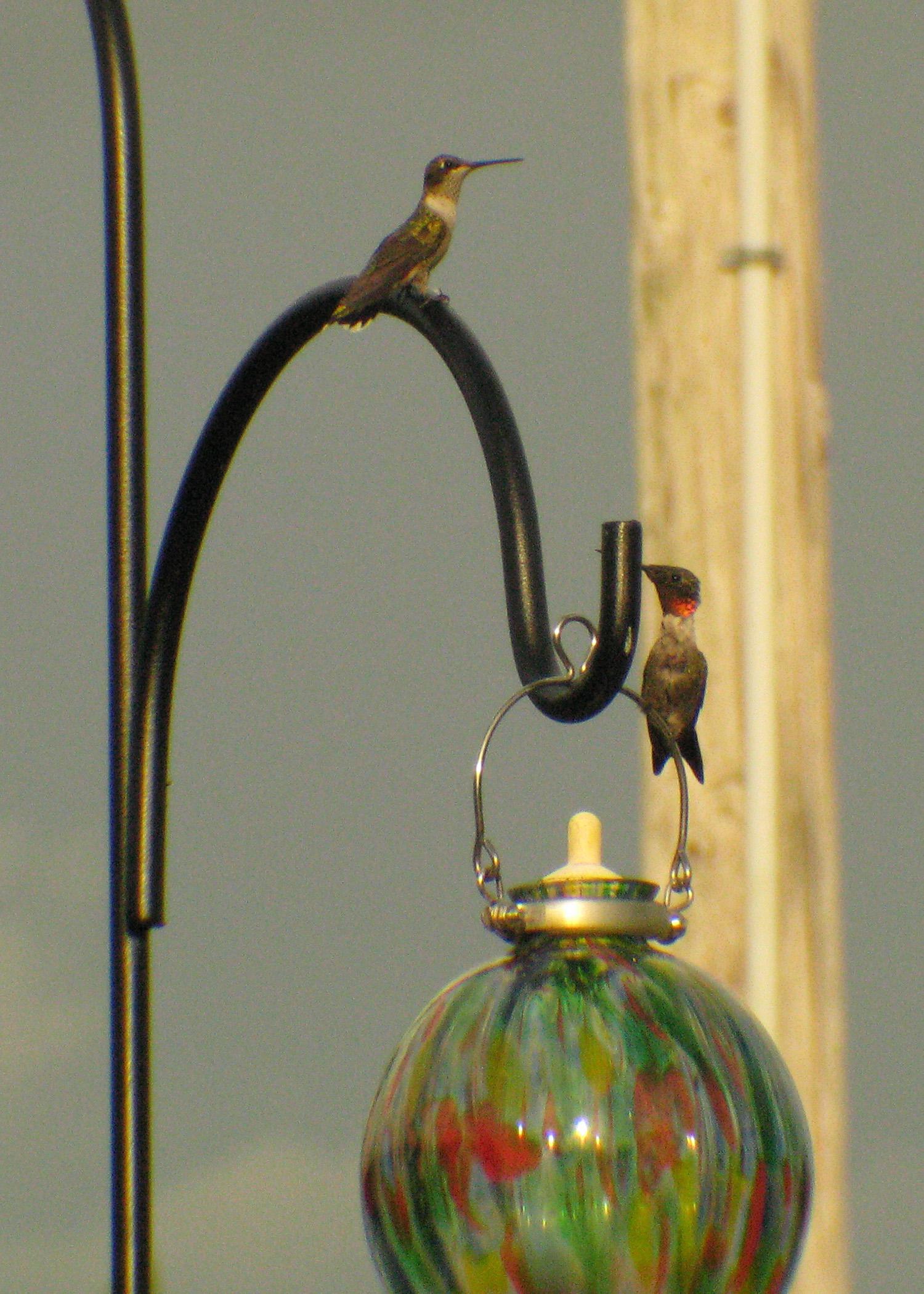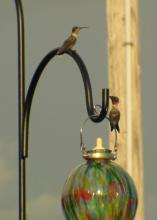Information Possibly Outdated
The information presented on this page was originally released on September 11, 2015. It may not be outdated, but please search our site for more current information. If you plan to quote or reference this information in a publication, please check with the Extension specialist or author before proceeding.
Keep hummingbirds coming back for more
STARKVILLE, Miss. -- Mississippi summers bring unbearable heat and humidity, but they also bring many treasures, like longer days, more vacation time and hummingbirds.
Many Mississippi residents can’t wait to fill up their feeders with a sugary concoction and wait for the buzzing of those amazing little wings. These tiny birds migrate south before cold weather arrives in the fall. Hummingbirds winter in Central and South America, and they return to Mississippi in early spring.
Here in Mississippi, you can begin to set out feeders in March to supplement their diet as hummingbirds begin to arrive from their migration from more southern latitudes. They will return south in November. If you have feeders, it is good to leave them out until you don’t notice any hummingbirds for two weeks.
There are about 16 species of hummingbirds in North America, 10 of which have been identified in Mississippi. The Ruby-throated Hummingbird which is the only species known to breed east of the Mississippi River, is the most common in Mississippi.
Hummingbirds are very small and have extremely high metabolisms. Because they spend so much energy flying, the birds typically consume 50 percent of their body weight in nectar every day. No wonder you have to refill your feeders so often!
Hummingbirds are attracted to bright colors -- scarlet, orange, white and red -- which is why hummingbird feeders are typically red. While commercially made nectar is acceptable, you can also make your own. Mix one part refined sugar to four parts water, boil to dissolve the sugar and prevent fermentation, cool and fill your feeder.
It’s not necessary to use red food coloring. Do not use brown sugar, honey or sugar substitutes. Hang feeders in the shade, perhaps under the overhang of a porch, to help slow fermentation and growth of algae in the feeder.
If you have noticed a hummingbird bully at your feeder, it is likely a male bird defending the food source. Once they mate, the male typically allows his female, or females, to share his food. To decrease the likelihood of one male dominating all of your feeders, hang feeders out of sight of each other. You can cluster them to attract more hummingbirds, but provide visual blocks like shrubs or house corners.
Hummingbirds are very important pollinators. They feed from tubular flowers. Hummingbirds are responsible for pollinating at least 150 plant species. Many gardeners keep their beloved hummingbirds around by growing native flowering plants.
When you add the correct combination of flowering plants to your garden, artificial feeders actually become unnecessary. Hummingbirds prefer a habitat with diverse flowers and shrubs with overlapping blooming times to ensure there is plenty of food throughout the spring and summer. If you lack space for planting shrubs, you can use patio containers and hanging baskets.
Managing your yard for all of the needs of hummingbirds will help you attract and keep plenty of hummingbirds visible for the season. For them to consider staying around, you must make sure you are providing not only food, but also water, nesting sites and shelter from predators and weather.
The Natural Resources Conservation Service created a leaflet that describes practical activities that can be used on private lands to attract and support hummingbirds (see http://plants.usda.gov/pollinators/Ruby-throated_hummingbird.pdf). The leaflet provides extensive lists of management options, such as planting the appropriate flowering plants, preserving landscape diversity for insect populations, limiting herbicide and pesticide use, managing forested areas, creating a source of running water and combining a number of these options to increase habitat components.
 Editor’s Note: Extension Outdoors is a column authored by several different experts in the Mississippi State University Extension Service.
Editor’s Note: Extension Outdoors is a column authored by several different experts in the Mississippi State University Extension Service.

Editor’s Note: Extension Outdoors is a column authored by several different experts in the Mississippi State University Extension Service.








